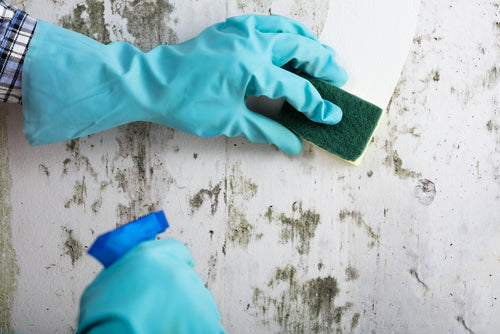
8 Tips for Preventing Mould in Your Shed
Are you experiencing mould in your shed? If so, Atlas Sheds are here to help.
Mould can cause various issues for your shed, affecting its appearance, leading to health issues, and preventing owners from being able to relax in their outhouse.
This can also affect the structural integrity of your shed, requiring repairs and replacements to revitalise its condition. Stick with us for eight effective tips to prevent mould in your shed.
If your old shed desperately needs replacing, browse our garden sheds today for durable and beautiful designs you can rely on.
What Causes Mould?
Mould is a fungus that thrives in moist and humid conditions. It reproduces through small spores that float through the air, landing on different surfaces and spreading fast.
There are several reasons why you may be experiencing mould in your shed. Some of these include:
- Excessive moisture: Sheds often experience condensation, roof leaks, or water ingress from the ground, creating the damp conditions mould requires to grow.
- Lack of ventilation: Poor ventilation traps humid air inside your shed. This helps it become an ideal breeding ground for mould.
- Organic materials: Mould feeds on organic materials such as wood, paper, fabric, and soil. These are often found in sheds, leading to the growth of mould.
- Temperature: Mould prefers conditions similar to what humans find comfortable, between 20°C and 30°C. Sheds often fall within this temperature range during summer, accelerating mould growth.
8 Tips for Preventing Mould
1. Improve Air Circulation
Humid environments are a breeding ground for mould. To prevent any growth, ensure that your shed is well-ventilated, especially during the summer months.
There are a few ways you can do this, including:
- Vent installation: Place soffit vents under the eaves and ridge vents at the roof's peak. This will allow air to circulate throughout the shed.
- Windows and doors: Regularly open windows and doors during the summer to improve air circulation. If security is a concern, install lockable windows or a security screen door to keep the shed safe and cool.
- Fans: Install portable fans or a permanent exhaust fan in the shed to keep it well-ventilated at all times.
2. Use a Dehumidifier
Dehumidifiers remove moisture from the air, reducing the risk of mould.
Place one of these in the centre of your shed or near any areas with high moisture levels to prevent mould growth. The ideal relative humidity (RH) for preventing mould growth is between 30% and 50%.
You can adjust your dehumidifier settings to maintain these levels within your shed.
3. Seal the Shed
Sealing any gaps or cracks in your shed can prevent water from penetrating the structure.
Look for signs of staining, peeling, or damp spots in your shed and seal the surrounding areas. The caulk around doors and windows can shrink and crack over time, so it’s best to re-seal them with silicone caulk to prevent mould.
For larger gaps or damage in the floors or ceilings, you may need to replace sections of siding or apply a patch before sealing.
4. Maintain the Roof
Harsh weather conditions and constant exposure to rain can wear down the roof of your shed over time.
Inspect your roof for signs of cracking, algae, and missing materials. Repair any damage accordingly. Check that any guttering on your shed is functioning properly to keep water away from the structure.
Add a waterproof roof coating or sealing as an extra line of defence against mould.
5. Use Plastic Storage
Unlike cardboard or wood, plastic is resistant to moisture, making it ideal for storing items in your shed.
Keep any containers off the ground to protect them from moisture, placing them high up on shelves. Avoid overpacking the containers to prevent cracks or splits in the storage.
6. Keep the Shed Tidy
Accumulation of waste or hoarding items in your shed can lead to a build-up of dirt, grime, and excessive moisture.
Declutter your shed and clean out any rotting items, removing any dirt, dust, and debris. Organise your items into storage containers and thoroughly clean any items before placing them back in your shed.
7. Clean Regularly
Once you have removed any old items, brush and vacuum your shed to get rid of any built-up grime.
Clean all windows from condensation marks and inspect the shed for mould and mildew. Use a damp cloth to wipe down shelves, workbenches, and other surfaces.
Create a regular cleaning routine and contact a professional if any pests or moulds are spotted in your shed.
8. Embrace Natural Light
Sunlight naturally helps to reduce moisture, killing mould spores that have already settled on surfaces.
To increase the amount of natural light in your shed, install extra windows or opt for a shed with pre-installed windows for maximum light. Our summer houses are the perfect choice.
Regularly trim any plants or foliage around your shed to prevent them from blocking the sunlight.